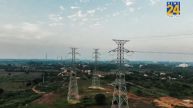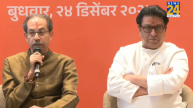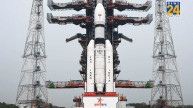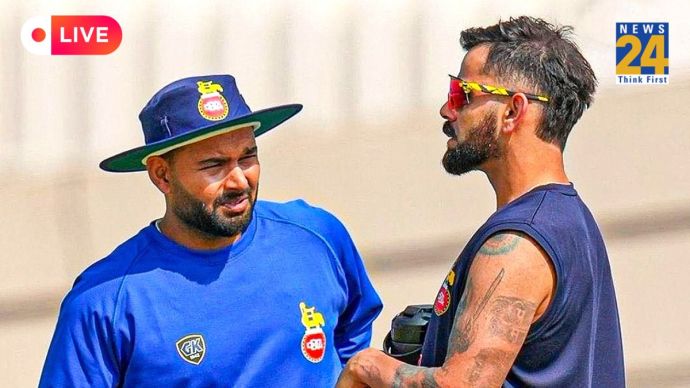Sriharikota: India’s spaceport, is poised for a momentous event as the nation gears up for the launch of its pioneering space-based solar mission, Aditya-L1. The countdown has begun, and here’s everything you need to know about this extraordinary mission.
Following the years of consistent preparations, hundreds of scientists working tirelessly for days and above all the ambition of a successful launch of Aditya L-1, leads to the beginning of its journey to the sun. The anticipation of the success of the mission was also laced with the garb of collective prayers throughout the nation.
The Indian space vehicle, which is scheduled to study the sun and float in the Lagrange point will take almost four years.
#WATCH | Aditya-L1 Mission will be launched today by the Indian Space Research Organisation (ISRO) from Sriharikota
---Advertisement---(Visuals from Satish Dhawan Space Centre in Sriharikota, Andhra Pradesh) pic.twitter.com/wvJZTyE0iW
— ANI (@ANI) September 2, 2023
Aditya-L1’s celestial abode: Exploring the solar halo
Aditya-L1 is destined for a ‘halo orbit,’ strategically positioned 1.5 million kilometers away from Earth, gently caressing the boundaries of space. This unique orbit is approximately 1% of the Earth-Sun distance.
The mission’s primary objective is to explore the Sun’s outer atmosphere, an expansive disc of scorching gases. However, it’s crucial to note that Aditya-L1 will not venture too close to our blazing star.
Here is the brochure: https://t.co/5tC1c7MR0u
and a few quick facts:
🔸Aditya-L1 will stay approximately 1.5 million km away from Earth, directed towards the Sun, which is about 1% of the Earth-Sun distance.
🔸The Sun is a giant sphere of gas and Aditya-L1 would study the… pic.twitter.com/N9qhBzZMMW— ISRO (@isro) September 1, 2023
ISRO’s stellar ambition: From moon to sun
Just ten days after making history with a lunar landing near the Moon’s South Pole, the Indian Space Research Organisation (ISRO) is redirecting its focus to our celestial neighbor, the Sun. On September 2, at 11:50 am, Aditya-L1 will embark on its daring journey from Sriharikota.
Union Home Minister Amit Shah, reflecting on India’s remarkable achievements, remarked, “We have reached the Moon and will soon reach near the Sun.” This statement was made during the ‘Meri Maati Mera Desh‘ event, highlighting India’s relentless pursuit of space exploration.
🚀PSLV-C57/🛰️Aditya-L1 Mission:
The launch of Aditya-L1,
the first space-based Indian observatory to study the Sun ☀️, is scheduled for
🗓️September 2, 2023, at
🕛11:50 Hrs. IST from Sriharikota.Citizens are invited to witness the launch from the Launch View Gallery at… pic.twitter.com/bjhM5mZNrx
— ISRO (@isro) August 28, 2023
How to witness the spectacle?
For those eager to witness the Aditya-L1 launch live, registration is available at this URL.
Hurry, as registration is open for a limited time. Alternatively, viewers can register for the Launch View Gallery and Space Museum on the same website.
ISRO plans to broadcast the launch live on its YouTube channel, and it will also be televised by DD News.
Pristine preparations
The Indian Space Research Organisation has meticulously prepared for the mission, including thorough vehicle internal checks. Here are glimpses of the preparations.
The Indian Institute of Astrophysics (IIA) has played a pivotal role in Aditya-L1’s success by designing, assembling, and testing the Visible Emission Line Coronagraph (VELC), one of seven vital payloads. This exemplifies India’s scientific prowess in studying the Sun.
Instruments of discovery
Aditya-L1 carries a treasure trove of scientific instruments, including the Solar Ultraviolet Imaging Telescope (SUIT), the Aditya Solar Wind Particle Experiment (ASPEX), the Plasma Analyser Package for Aditya (PAPA), the SoLEXS-Solar Low Energy X-ray Spectrometer (SoLEXS), the High Energy L1 Orbiting X-ray Spectrometer HEL1OS, and the Magnetometer.
Unlocking the LaGrange points
LaGrange points, regions in space where objects can remain relatively stationary due to the gravitational equilibrium between two massive bodies, are critical for this mission’s success. They enable spacecraft to conserve fuel while maintaining their positions in space.
A cosmic blessing
On September 1, the ISRO team paid a visit to the Tirumala Sri Venkateswara Temple in Andhra Pradesh, offering prayers with a miniature replica of the Aditya-L1 Mission.
Prepare to witness India’s journey towards the Sun, an exploration that promises to unveil the mysteries of our radiant star.
#WATCH | Andhra Pradesh: A team of ISRO scientists arrive at Tirumala Sri Venkateswara Temple, with a miniature model of the Aditya-L1 Mission to offer prayers.
India’s first solar mission (Aditya-L1 Mission) is scheduled to be launched on September 2 at 11.50am from the… pic.twitter.com/XPvh5q8M7F
— ANI (@ANI) September 1, 2023













